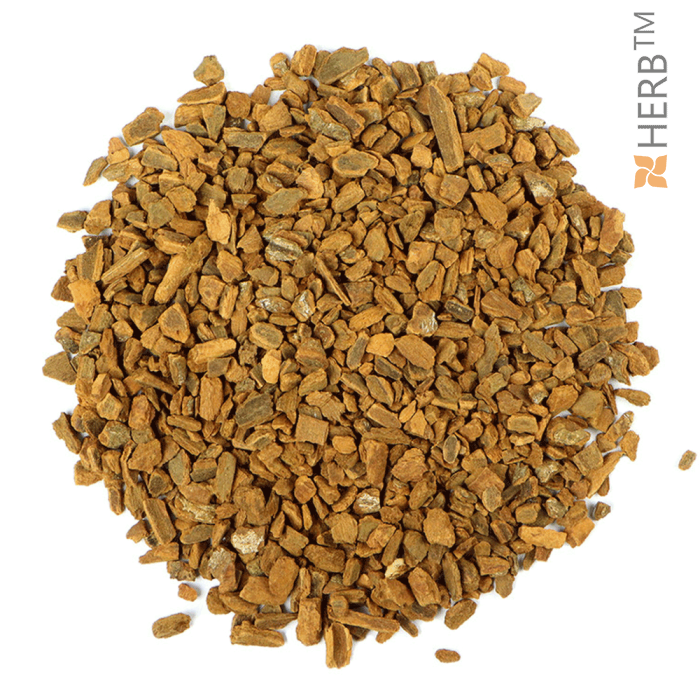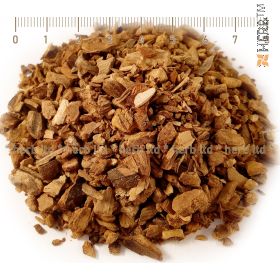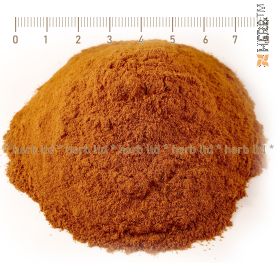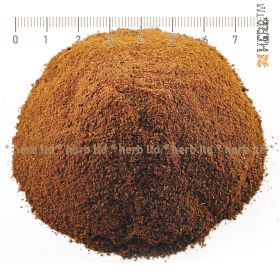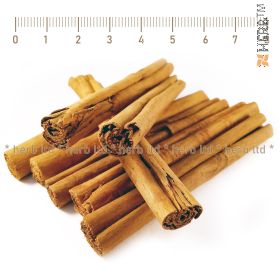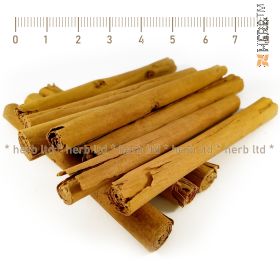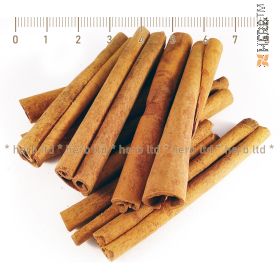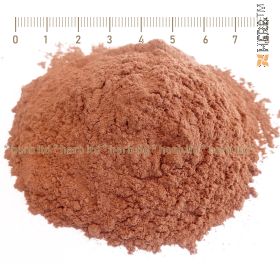Cinnamon Cassia bark - broken large pieces, HerbTM
- Производител: Herb Ltd
Cinnamon Cassia bark in large pieces
Cinnamomum cassia
Cinnamon is one of the healthiest and tastiest spices on the planet. Adds a tempting rich aroma to dishes and drinks. Pieces of the bark can be placed during cooking to flavor savory and sweet dishes, teas and other drinks.
Whether it looks pretty in a glass bowl on your coffee table, makes the room smell nice, or adds a unique flavor to your meals or your morning coffee, it's always a good idea to have cinnamon bark at home!.
Cassia has long been used in cooking and in traditional Chinese medicine.
Characteristics of Cinnamon Cassia
Cassia cinnamon comes from the Cinnamomum cassia tree, also called Cinnamomum aromaticum. It originates from southern China and is also known as Chinese cinnamon.
Cassia is a dark brown-red color, with thicker sticks and a coarser texture than Ceylon cinnamon. It is the most common and preferred type of cinnamon.
Cassia bark is used as a flavoring in cooking and especially in liqueurs and chocolate. Southern Europeans generally prefer it to Ceylon cinnamon, and in North America ground cinnamon is generally sold regardless of the species from which the bark is obtained.
The cassia bark is peeled from the stems and branches and set aside to dry. Some varieties are scraped. As it dries, the bark is rolled into a feather. The color varies from light reddish-brown for the thin, scraped bark to gray for the thick, unscraped bark. Ground cassia is reddish-brown in color. Cassia from China is less aromatic than that from Vietnam and Indonesia. Cassia on all three sides has a sweet, aromatic and spicy taste. Vietnamese or Saigon cassia is especially prized.
The distinctive smell and taste of cinnamon is due to the oil part, which is very high in the compound cinnamaldehyde. In Cassia Cinnamon, it is 95% of the oil, which explains its stronger aroma compared to Ceylon Cinnamon, in which the compound is 50-63%. Scientists believe that this compound is responsible for most of cinnamon's powerful effects on health and metabolism.
Health Benefits of Cinnamon
Cinnamon contains large amounts of powerful antioxidants - polyphenols. In quantitative content of antioxidants, cinnamon surpasses even superfoods such as garlic and oregano.
The antioxidants in cinnamon have anti-inflammatory effects, which can help reduce the risk of disease.
Cinnamon may improve some key risk factors for heart disease, including cholesterol, triglycerides and blood pressure.
Cinnamon has been shown to significantly increase sensitivity to the hormone insulin.
Cinnamon lowers fasting blood sugar levels and has a powerful anti-diabetic effect when taken at 0.5-2 teaspoons per day.
Cinnamon action
In digestive disorders. Increases appetite, has an antiseptic and antiparasitic effect. Beneficial effect in diabetes mellitus.
How to use Cinnamon Cassia bark in pieces
Seasoning: Bits of bark can be added during cooking to flavor savory and sweet dishes. Remove when the meal is ready.
You can grind the peel to use as a spice.
Fantastic in mulled wine, cider or even in your coffee. Gives a unique aroma.
Use as a component in herbal mixes and spices.
Tea: 1/5 tsp. (1 g) of the bark is poured with 250 ml of boiling water, covered for 15 minutes. Drink 20 minutes before meals, slightly warm.
It has a relaxing effect in the evening, immediately before going to bed with a little hot milk.
For diabetes, it is beneficial to take 1 cup of decoction before each meal.
Warning
Cassia cinnamon contains small amounts of coumarin. In small amounts, coumarin contributes to the removal of toxins from the tissues and purifies the blood, also thins the blood. In addition, it neutralizes the harmful effects on the body of malignant nitrites and nitrates, which are contained in mineral fertilizers. It is not recommended to use in large quantities, for example more than 3 grams /1 teaspoon/ per day for a body weight of 60 kg, as it damages the liver. The consumption of cinnamon up to this amount is permissible and, according to European legislation, it does not harm the body of an adult person weighing 60 kg. The cited data are from the BFR - German Institute for Food Risk Assessment.
Contraindications
According to some authors, cinnamon should not be taken during pregnancy and breastfeeding, although there are no specific studies to confirm this statement. The presence of coumarin has been found in some types of cinnamon trees. Coumarin is known to have a negative effect on the kidneys and liver.
Storage
Cinnamon should be stored in a tightly closed glass container in a cool, dark and dry place.

